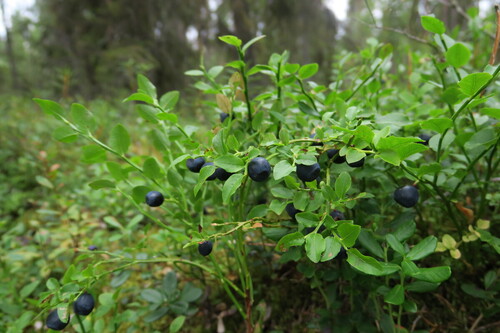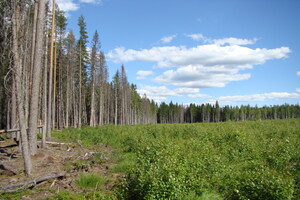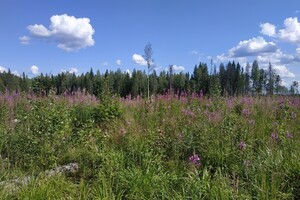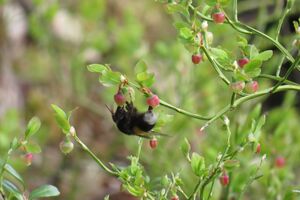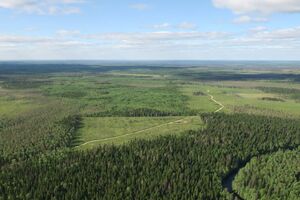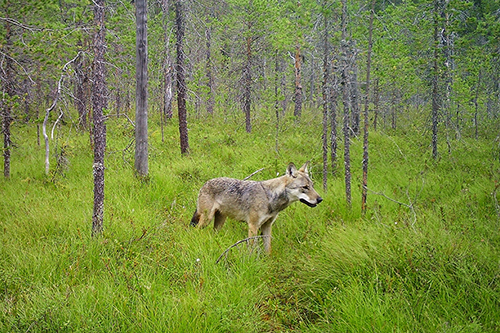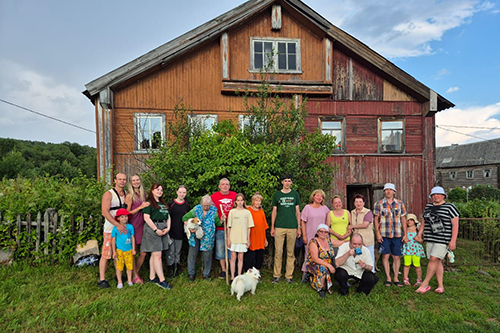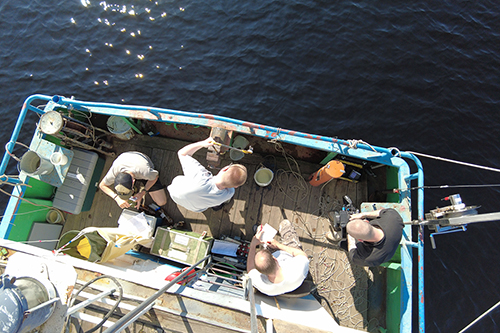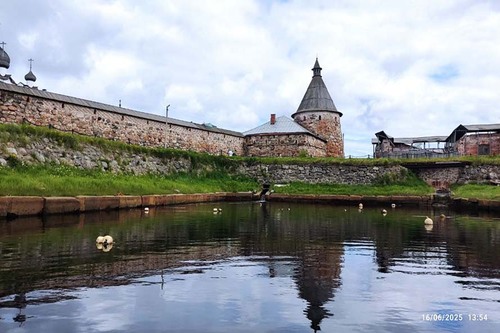Of particular interest to scientists are ecotones - transition zones between forest and cut-over site. Such areas retain the conditions similar to the microclimate under the forest canopy. Therefore, boreal vegetation in the ecotone strip is not so strongly transformed and recovers sooner.
— The long logging history in the European North of Russia has created a complex mosaic of coniferous and deciduous forests of different ages. Every year, new ecotones emerge along the edges of cut-over areas. Even though they are narrow, 20-meter-wide strips, their importance for the conservation of boreal plants is huge given their length. We were interested in how the prevalent coniferous forest plant species respond to changes in such zones, as well as which main habitat factors influence these species, — told Nadezhda Genikova, Senior Researcher at the Laboratory of Boreal Forest Dynamics and Productivity, Forest Research Institute KarRC RAS.

Nadezhda Genikova, Senior Researcher at the Laboratory of Boreal Forest Dynamics and Productivity, Forest Research Institute KarRC RAS. Photo by Vladimir Kharitonov / KarRC RAS
Surveys were carried out in spruce forests of the Arkhangelsk Region with sites cut over two to ten years before. Transects across the forest-to-cut-over site transition were sampled. Four zones were studied in each transect: forest, forest edge, clear-cut edge, and clear-cut site. Researchers produced geobotanical descriptions of the sites, indicating characteristics of the tree stand, advance regeneration, understory, ground vegetation, and microrelief. Surveys of all sample plots detected 29 vascular plant species in the herb-subshrub layer, the prevalent ones being cowberry, bilberry, fireweed, graminoids such as wavy hair-grass and reed grass. The results of the studies were published in the international Forests Journal.
— Bilberry is an indicator of habitat change. Is cannot grow in full sun: leaves get sun-burnt and the plants wither, so the species feels bad in cut-over sites. In the first years after stand removal, its abundance and average height in the cut-over site drop sharply compared to the original forest community, and even 10 years after logging these parameters are not fully restored. Cowberry, on the other hand, is tolerant of drier conditions and can form local groupings, or patches, in cut-over sites. We found that cowberry was far more abundant in transitional zones between spruce forest and cut-over site. The abundance of this subshrub in the ecotone was by half higher. Being lower in cut-over sites than in the forest in the first 2-3 post-logging years, it then recovered to a level typical of intact spruce forest, — shared Nadezhda Genikova.

Working with database. Photo by Viktoria Svetsova / KarRC RAS
The study also revealed that coniferous regeneration in cut-over sites generates the conditions similar to those in ecotones, helping forest subshrubs to survive and recover. Scientists also plan to study ecotones between cut-over sites and pine forest and to investigate their impact on the productivity of bilberry and cowberry.
Transitional zones between communities are of interest to biologists and ecologists. The interface between forest and cut-over site is a concentration point for some bird and mammal species and may contain large resources of economically valuable plant species.
Photos by N. Genikova, V. Mamontov, V. Kharitonov, V. Shvetsova




